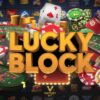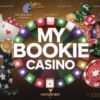Have you ever enjoyed a winning run at the poker table only to see one poor hand break it all?
Many players feel the sting when chance slips away.
Money control sits at the heart of the game. It directs how you keep playing rather than ending your time quickly.
What Is Bankroll Management and Why It Matters
Bankroll management means you plan and guard the money you set aside for poker.
Imagine your funds as the table’s grounding point.
Your play links closely to how you group your coins.
Poker is not only the art of playing cards; it also rides on the ups and downs of chance that touch every hand.
Your lasting success depends on two parts: the cards you play and the funds you hold.
The aim stays to survive the slow runs and use the good times to build on your game.
Key Principles for Smart Bankroll Choices
-
Separate Poker Funds from Personal Finances
Keep money for poker right next to the idea of a budget that does not mix with bills or rent.
This split keeps your life and your play clear as day. -
Know the Stakes You Can Afford
In cash or tournament games, match the stakes to what you hold.
Staying with limits that suit your funds stops you from jumping too soon and losing the lot. -
Stick to a Sustainable Level
Remember discipline follows every decision.
Even when wins come fast, jumping to higher stakes can undo your gains.
Choose a level that your funds can hold even when luck falters and keep to it until your records show you may change levels. -
Regularly Review Your Performance
Note down wins and losses in clear records.
By watching these, you see when to adjust your game up or down.
Such careful steps keep your funds safe while helping you grow.
How Bankroll Management Shapes Your Poker Journey
Good bankroll management does not cut your fun short.
It acts like a calm guide that lets you play without the fear of losing all you have.
This stable way of managing builds a clear mind at the table.
The results are better choices and a steadier game.
No matter if you are new to poker or a player who has seen many tables, keeping your funds in check stays as key as reading the cards.
It forms the base on which steady, long-term play grows.
Actionable Takeaways to Apply Now
- Set aside a dedicated bankroll separate from funds for daily needs. See it as an investment in your play.
- Choose stakes that let you hold at least 20–40 buy-ins for cash games or 50+ buy-ins for tournaments to keep a safe gap against bad runs.
- Do not jump to higher stakes right after a win streak. Wait until your funds and skill truly match the new level.
- Keep clear records of each session so you see trends and make sound decisions with your funds.
- Accept that losing streaks come along. A proper bankroll stops a deep loss and lets you keep learning.
Follow these steps as you play this year and beyond.
How you plan your money off the table ties in with your play on it.
Smart choices with your funds build a steady play day by day.
Watch how your poker path transforms as you pair clear decisions with careful play.






























